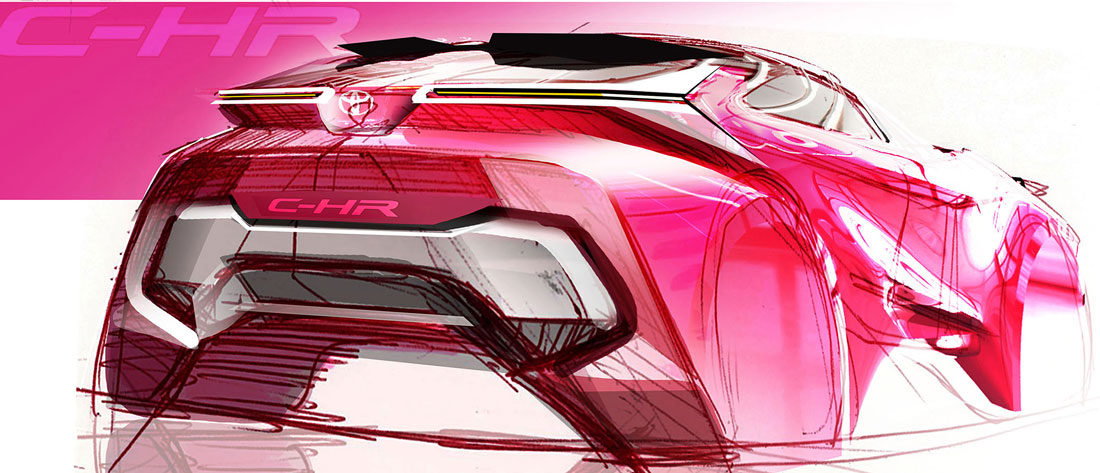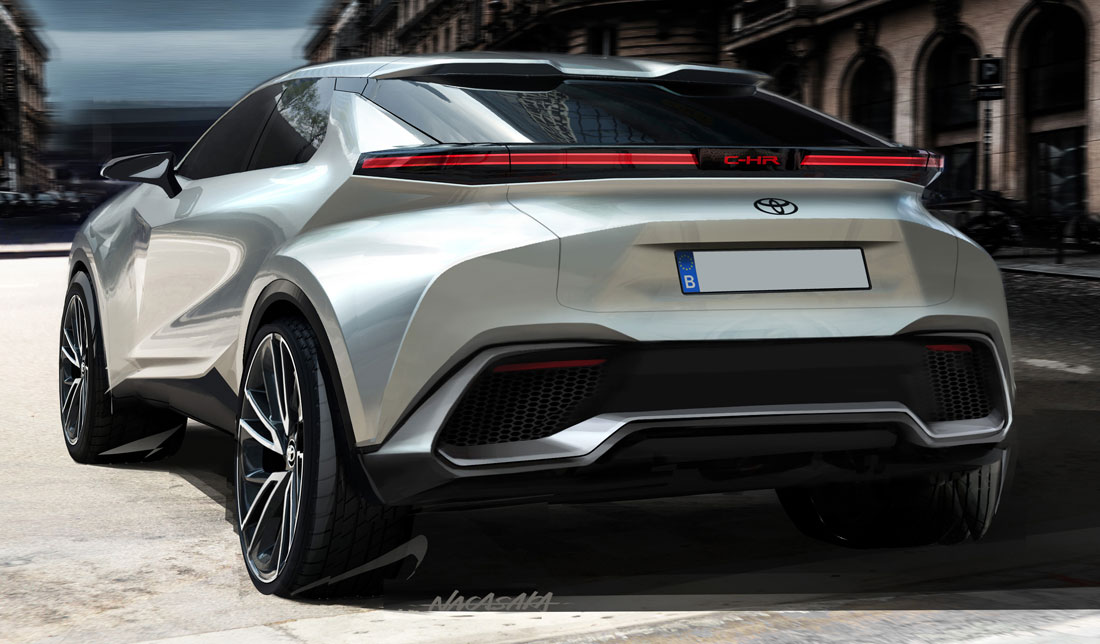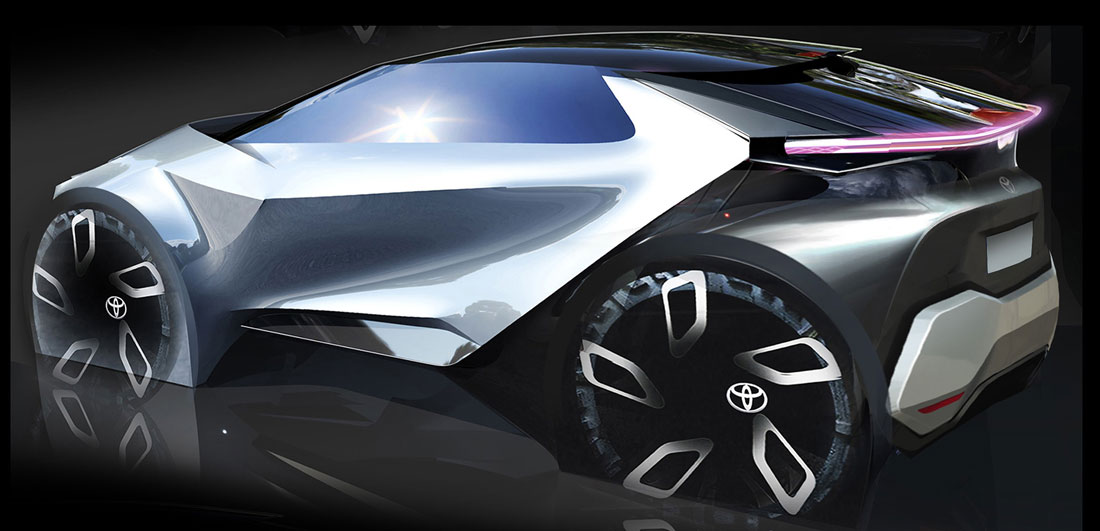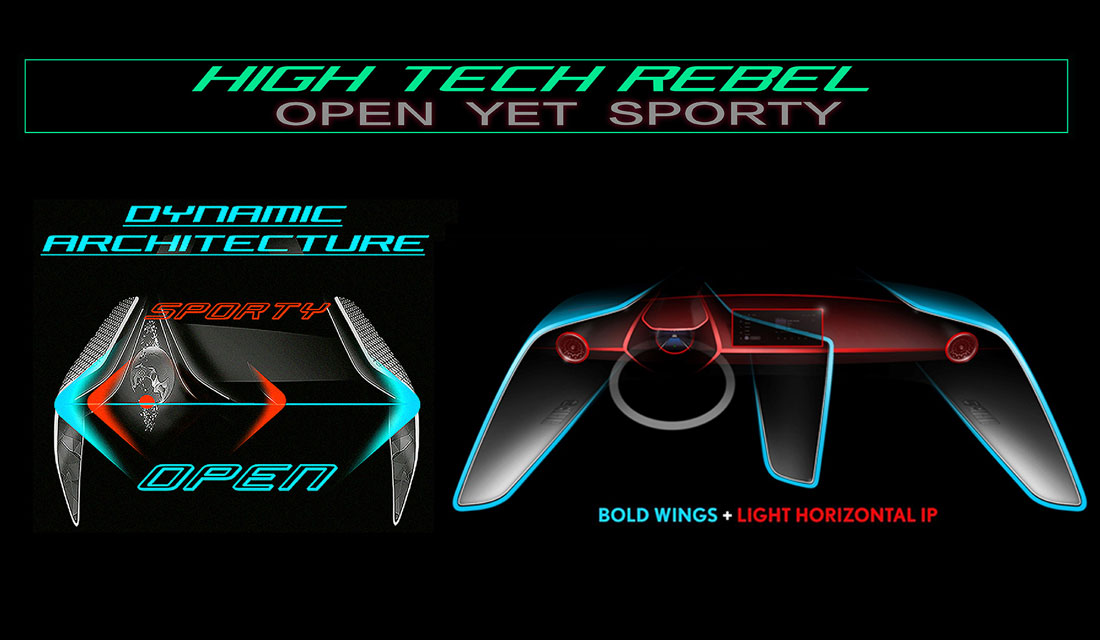Some models mark the turning point in a brand’s history by reshaping the public’s perception of it. This was exactly what the Toyota C-HR did in Europe: valued till then above all for the technology and reliability of its products, the Japanese maker surprised observers by unexpectedly switching its focus to style. And it is precisely this original design, however polarising, applied to an SUV-coupé architecture that has decreed its success since the market launch in 2016.
The time had come to transition to a new generation. To find out where the Toyota C-HR project was headed – that’s right, Toyota is part of the name, as the illuminated logo spells out at the base of the rear window – we went to Zaventem, not far from Brussels. This is Toyota Motor Europe’s headquarters and Technical Centre.
Precision in production
We were welcomed by Tadao Mori, Head of Styling, who first showed us round the bright, spacious offices where his team of around 20 people has been working since 2017. The big advantage, he explained, was that they worked alongside the engineers: “We involve them, we show them why we take the styling decisions we do and they take them on board and make them feasible. It is thanks to this synergy that when the Toyota C-HR went into production no adjustments were needed and the tolerances and couplings of the panels making up the bodywork were already perfect”.
Preserved identity
The primary aim was to preserve the essence of the Toyota C-HR, with its crossover coupé silhouette, a car that went in a contrary direction to what was normally expected from Toyota. “However, we also wanted to sort out some of the problems of the previous generation, such as rear passenger visibility”, explained Elvio D’Aprile, project leader. We see the car for the first time and there is no questioning its identity: the Toyota C-HR is immediately recognisable, with its bold proportions and a front end that Mori defines as “determined”, with refined, refreshingly modern forms. Gone are some stylistic liberties such as the integrated tail pillar handle, replaced, as at the front, by more modern flush door handles.
The aerodynamic matter
A strong style, but not for the sake of aesthetics alone, explained Elvio D’Aprile, project leader. “Our target for aerodynamic efficiency was very high and every detail counts”, he said, pointing to the edges of the tail lights. As it happens, Toyota has long experience of Cx-functional silhouettes, just think of the Prius, and working alongside the aerodynamic engineers, as is the case in Zaventem, is an advantage. “The wing design envelops the driver and induces him to focus on the road, but the passenger does not feel excluded”, Mori points out. “They both share the big 12.3-inch screen of the multimedia system in the centre of the dashboard”.
Quality and style
That it is a hedonistic product is also confirmed by the line of accessories designed for the aftermarket at the Zaventem style centre, overseen by Jaime Noriega: “They accentuate the character of the model, for example offering options to make it sportier or more SUV-like. We define them in parallel with the development of each car; it is important for them to be of the highest quality and integrate correctly with the design of the vehicle, to which they add value”.
To define the character of the Toyota C-HR, careful research was done on colours and materials, identifying a dynamic and sophisticated lifestyle personified by a European target customer the designers called Andrea, as C&T designer Julie Rodier explains. “We wanted to play on contrasts, with a very dynamic, edgy exterior enhanced for example by the Sulphur colour with its liquid metal effect, and a more neutral interior, with black prevailing as the base to which coloured, refined and customisable details are added”. And of course all materials have been developed with sustainability in mind.
Exploring new territories
For Andrea Carlucci, Vice President Product Strategy and Marketing at Toyota Motor Europe, and one of the fathers of the new Toyota C-HR, which he has followed from the first pencil strokes, this project “has been an exceptional endeavour, not only from a design point of view. We explore new territories in safety, driving dynamics, sustainability and multimedia. We wanted to put it what we consider the essence of Toyota in Europe”.
(Full article in A&D no. 261)
















